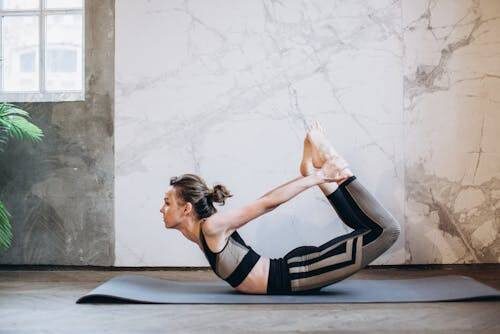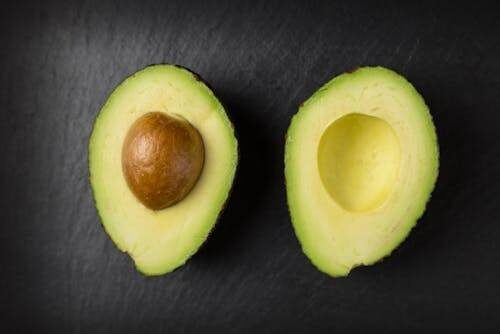Forget expensive gym memberships and crowded weight rooms. Calisthenics, a bodyweight training method utilizing your own bodyweight for resistance, offers a powerful and accessible path to building strength, improving flexibility, and sculpting a toned physique. The beauty of calisthenics lies in its simplicity – all you need is your own body and a little determination to transform your living room into a personal fitness haven.
This comprehensive guide empowers you to embark on your calisthenics journey at home. We’ll delve into the benefits of calisthenics, explore essential exercises for beginners, and provide tips to create a personalized workout routine. So, ditch the excuses and get ready to unlock your full potential with the power of calisthenics!
Table of Contents
1. The Power Within: Unveiling the Benefits of Calisthenics
Calisthenics offers a multitude of benefits for people of all fitness levels:
- Convenience and Accessibility: No gym membership or fancy equipment is required! Perform calisthenics exercises anywhere, anytime, making it perfect for busy schedules.
- Functional Strength and Movement: Calisthenics exercises mimic everyday movements, improving your balance, coordination, and overall functional fitness.
- Muscle Building and Toning: Calisthenics utilizes various bodyweight exercises to target different muscle groups, leading to increased strength and muscle definition.
- Improved Flexibility: Many calisthenics exercises incorporate stretches or dynamic movements, enhancing your flexibility and range of motion.
- Cost-Effective: No equipment needed translates to significant cost savings compared to gym memberships and personal training sessions.
- Mental Toughness: Calisthenics can be challenging, but overcoming those challenges builds mental resilience and discipline.
2. Building Your Foundation: Essential Calisthenics Exercises for Beginners
Before diving into more advanced exercises, mastering these foundational movements is crucial for proper form and preventing injury:
- Squats: The king of lower body exercises. Stand with your feet shoulder-width apart, lower your body as if sitting in a chair, keeping your back straight and core engaged.
- Push-ups: A classic upper body exercise. Start on your knees or in a modified plank position with hands shoulder-width apart. Lower your chest towards the ground, keeping your core tight and elbows close to your body.
- Lunges: Target your quads, glutes, and hamstrings. Step forward with one leg, lowering your hips until both knees are bent at 90-degree angles. Push back to the starting position and repeat with the other leg.
- Plank: This isometric exercise strengthens your core, back, and shoulders. Start in a high plank position on your forearms, forming a straight line from head to heels. Hold for increasing durations as you get stronger.
- Dips: Utilize sturdy chairs or benches to build tricep strength. Sit on the edge of the chair with your hands gripping the edge beside your hips. Lower yourself down until your elbows are bent at 90 degrees and then press back up to the starting position.
3. Crafting Your Home Calisthenics Routine: A Step-by-Step Guide
Now that you’ve mastered the basics, let’s design a sample home calisthenics workout routine:
Sample Home Calisthenics Workout:
- Warm-up: 5-10 minutes of light cardio (jumping jacks, jogging in place) and dynamic stretches.
Workout (Perform 3 sets of 10-12 repetitions for each exercise):
- Squats
- Modified Push-ups (on knees or against a wall)
- Lunges (alternating legs)
- Wall Sits (hold for increasing durations)
- Plank
Rest for 30 seconds between sets and 1-2 minutes between exercises.
Cool-down: 5-10 minutes of static stretches to improve flexibility and reduce muscle soreness.
This is just a sample routine. As you progress, you can incorporate more challenging exercises, increase sets and repetitions, or decrease rest periods. Consider exploring exercises like pull-ups (using a doorway pull-up bar), dips on parallel bars, and advanced variations of lunges and squats.
4. Progression is Key: Tips to Optimize Your Calisthenics Journey
Here are some additional tips to maximize your calisthenics gains at home:
- Focus on Form: Proper form is critical to prevent injuries and ensure you target the intended muscle groups. Don’t be afraid to watch instructional videos or seek guidance from a certified trainer.
- Listen to Your Body: Don’t push yourself to exhaustion. Take rest days when needed and prioritize quality sleep for optimal recovery.
- Track Your Progress: Monitoring your progress keeps you motivated and helps you adjust your workout plan. Track the variations of exercises you perform
FAQ:
Can I build muscle with just calisthenics?
- Absolutely! Calisthenics is an effective way to build strength and muscle. By progressively challenging yourself with variations and increased repetitions, you can achieve significant muscle growth.
Do I need any equipment for calisthenics?
- While not essential, some equipment like resistance bands or a pull-up bar can add variety to your workouts. However, you can start with just your body weight.
How often should I do calisthenics workouts?
- Aim for 3-4 workouts per week, allowing for rest days for muscle recovery.
Exercises and Progressions:
I can’t do a full push-up. What should I do?
- Start with modified push-ups on your knees or against a wall. Gradually increase the difficulty as you get stronger.
How can I make squats more challenging?
- Try adding depth to your squats, performing single-leg squats, or incorporating jumps into your squats.
What are some advanced calisthenics exercises?
- As you progress, challenge yourself with exercises like muscle-ups, planche push-ups, human flag, and handstands.
Nutrition and Recovery:
What should I eat to support muscle growth with calisthenics?
- Focus on a balanced diet with adequate protein for muscle repair and growth. Include lean protein sources, whole grains, fruits, and vegetables.
How much sleep do I need for optimal muscle recovery?
- Aim for 7-9 hours of quality sleep per night to allow your muscles to repair and grow.
Common Challenges:
I’m feeling sore after my calisthenics workout. Is this normal?
- Soreness is common, especially when starting. It’s important to listen to your body and take rest days when needed. Incorporate light cardio or stretching on rest days to aid recovery.
I’m struggling to stay motivated. What can I do?
- Set realistic goals, track your progress, find a workout buddy, and celebrate small victories. Incorporate variety into your workouts to prevent boredom.
Remember, consistency is key to seeing results with calisthenics. Start with basic exercises, gradually progress, and listen to your body. Enjoy the journey and celebrate your achievements!
-
10 Superfoods for Healthy Eyes That Boost Your Vision
Let’s be honest — we don’t always treat our eyes the way they deserve. From binge-watching late-night shows to scrolling endlessly through social media, our vision takes a lot. The problem? We often forget how crucial eye health really is… until something starts to go wrong. The good news? You don’t need to wait for…
-
Importance of Taking Risks for Success
Let’s face it—taking risks is scary. Whether it’s quitting a job, starting a business, or even just speaking up in a meeting, the idea of stepping outside what’s familiar can feel downright uncomfortable. But here’s the thing: most people who achieve real success didn’t get there by playing it safe. They took leaps. They bet…
-
What to do After Layoff ? | 7 Steps to Bounce Back Stronger and Smarter
Losing your job is one of those moments that just hits differently. It’s not just about the paycheck—it’s about routine, identity, even pride. One minute you’re gearing up for a busy quarter, and the next, you’re trying to figure out what the heck just happened. If you’re sitting there wondering what to do after layoff,…







